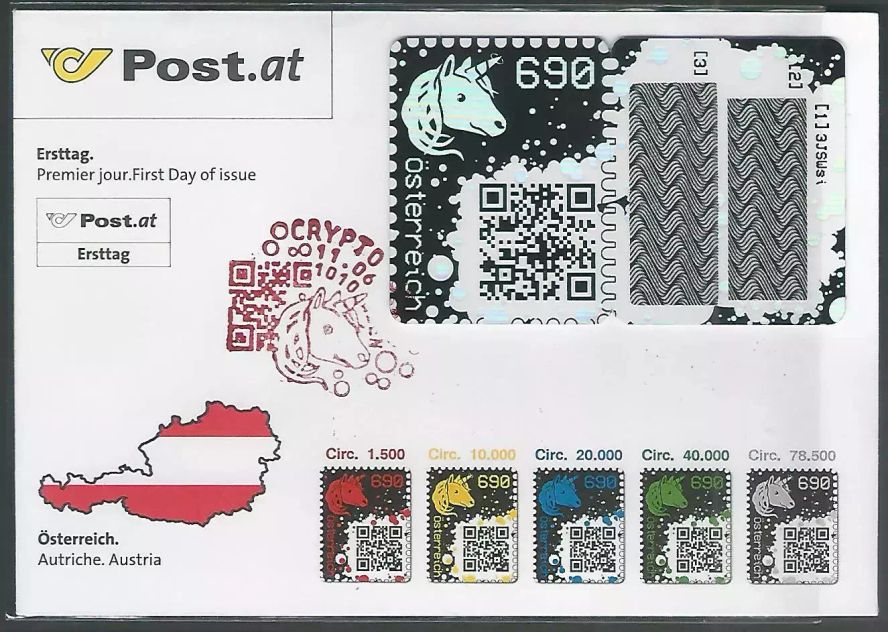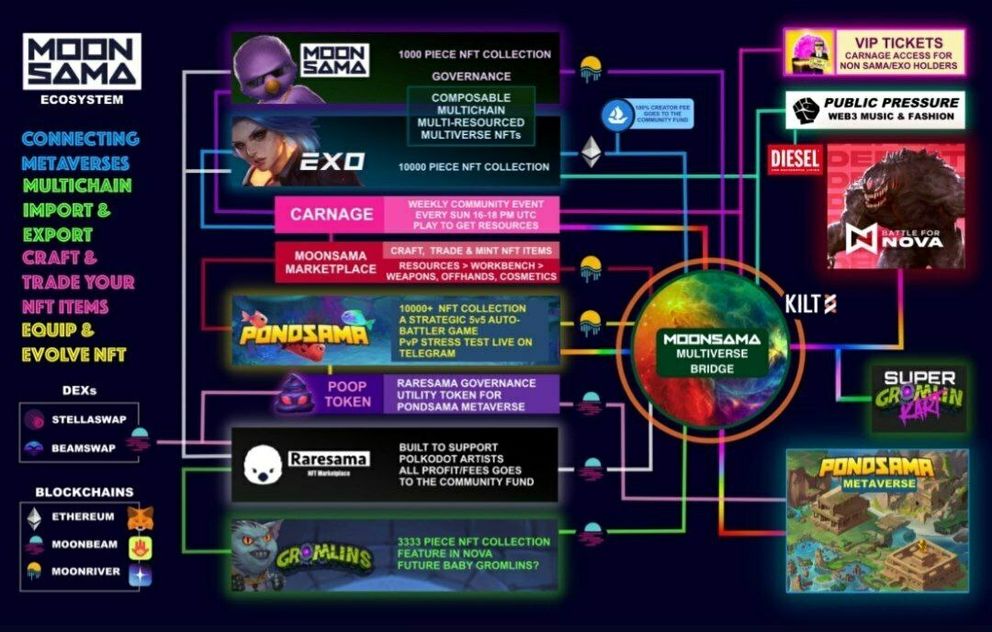For the younger generation, postage stamps are small pieces of paper affixed to the item of mail to cover the cost involved in moving, insuring, or registering. Now, let me use slightly different terminology...
Postage stamps are pieces of printed art with utility. They are issued (minted) by different postal administrations or authorized vendors (think of the blue checkmark on OpenSea) in various rarities. The rarest/most epic stamps are those of exceptional historical value or print error.
Crypto stamps?
They've been around for quite a while now. The first official Crypto stamps were issued in May of 2018 by the National Post Office of Gibraltar. On 11 June 2019, Austria Post released what it claimed to be the world's first blockchain stamp (read the full reference story).

Apart from government-owned postal offices, private initiatives are also trying to bring philately to crypto, such as STAMPSDAQ. Time will show how attractive the NFT community will find this.
NFTs are dead, long live NFTs 2.0
We've already witnessed a solid bubble in NFTs earlier this year. Even projects with no prior exposure to NFTs were minting like crazy, not to miss a ride on crypto enthusiasts' spending spree.

We've seen collections like the Bored Ape Yacht Club and CryptoPunks become some of the most expensive pieces of art you could buy, with artists like Beeple and Pak selling their pieces for tens of millions of dollars (full story).
NFTs 1.0 demonstrated proof of provenance/ownership in a digital asset as their sole utility. Design/artwork is highly subjective and brings little justification for astronomical price tags during a global market cooldown. NFTs 2.0, on the other hand, bring much more to the table.
Build or die
I predict NFTs to become the main battlefront for innovation in the upcoming years. It is such an incredible/underappreciated asset and has barely scratched the surface of its potential.
My favorite features of NFTs 2.0 are
Composability - the ability to add/layer other NFT assets
Governance - determine the voting power from NFT or its composed assets
Identity - attach real-life identity to NFT asset (e.g. KILT protocol)
Tokenization - attach/support real-world assets, such as Raresama stray dogs
Evolve/breed - control the fate of your NFT determined by your actions in real life or the metaverse.
Projects continuously building and delivering will be the shining stars of the next bull run, unlike those trying to pump the price artificially by false promises, bold roadmaps, and inferior utility.

In my eyes, Moonsama is the project dictating the pace of innovation with its multi-chain and multiverse approach to NFTs 2.0.
Will NFTs replace stamps?
I consider NFTs a great replacement/alternative to conventional art/collectibles, with UTILITY as its primary value driver. The only downside slowing down adoption/acceptance is the user experience and associated risks. The barrier to entry may be too high for many.
Have you ever tried to explain blockchain and NFT technology to someone who has never heard of it? Who wants to install wallets, understand the seed phrase, switch to the correct chain, pay high transaction fees and fall for a scam in the end?
NFTs need to become as accessible as postage stamps. The tech is here. Let's bring in the masses.